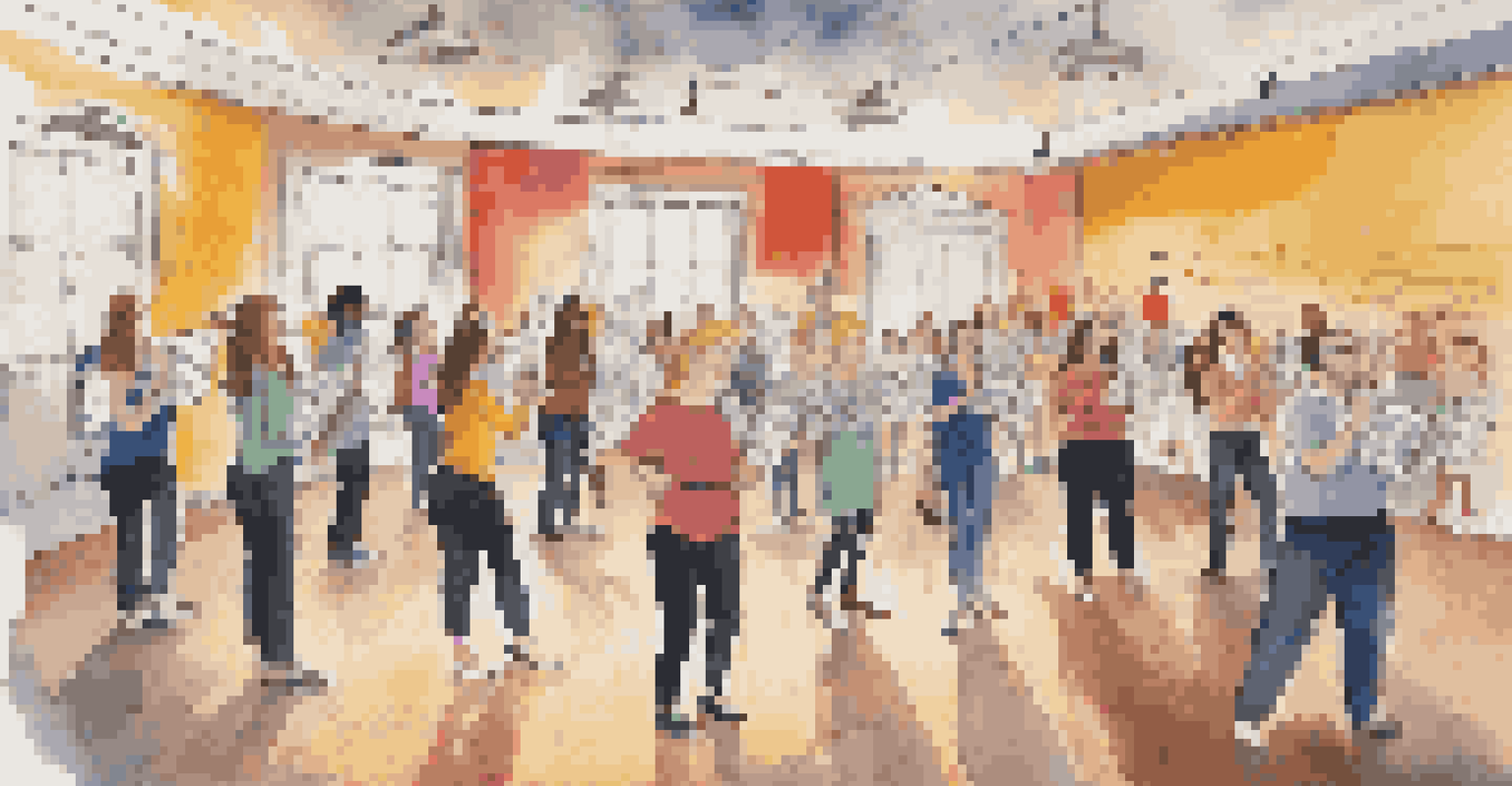Vocal Techniques for Musical Theater: A Comprehensive Guide

Understanding the Importance of Vocal Techniques in Theater
Vocal techniques are the backbone of any musical theater performance. They not only enhance the singer's ability to project their voice but also ensure that the emotions of the song are conveyed effectively. In a live performance, the audience is often far from the stage, making clear vocal delivery crucial for engagement.
The voice is the most powerful instrument of expression. It gives life to the words and emotion to the performance.
Moreover, mastering vocal techniques can prevent strain and injury, allowing performers to sing night after night without risking their vocal health. Just like an athlete trains their body, actors must train their voices to reach their full potential. This preparation is what separates amateur performances from those that truly captivate an audience.
Finally, understanding vocal techniques fosters greater confidence on stage. When performers know they can rely on their vocal skills, they can focus more on their character and storytelling, elevating the entire production. So, let's dive into the essential vocal techniques that every aspiring musical theater artist should know!
Breathing Techniques for Vocal Control and Sustaining Notes
Breathing is the foundation of singing, especially in musical theater where powerful vocals are essential. Proper breath control allows singers to sustain longer notes and deliver powerful performances without straining. Diaphragmatic breathing, where the diaphragm is engaged, is key for achieving this control.

To practice, try inhaling deeply through your nose, allowing your stomach to expand rather than your chest. Then, exhale slowly, feeling the airflow as you maintain a steady sound. This technique not only improves vocal strength but also helps in managing nerves during performances.
Vocal Techniques Enhance Performance
Mastering vocal techniques is essential for effective communication and emotional delivery in musical theater.
As you become comfortable with breath control, you'll notice a significant improvement in your vocal range and the ability to project your voice without shouting. This newfound control can make all the difference in delivering an impactful musical number that resonates with your audience.
Vocal Warm-Ups: Essential Exercises for Singers
Just like athletes warm up their bodies, singers need to warm up their voices. Vocal warm-ups are crucial for preparing the vocal cords and reducing the risk of strain. Simple exercises such as humming, lip trills, or sirens can effectively loosen the vocal muscles.
Singing is like a celebration of oxygen. It’s a way to express joy, pain, and everything in between.
Incorporating scales into your warm-up routine can also help expand your vocal range. Start with simple five-note patterns and gradually increase in complexity. This not only warms up your voice but also builds muscle memory for different notes and pitches.
Remember, a good warm-up routine can greatly enhance your overall performance. By taking the time to properly prepare your voice, you set yourself up for success on stage and ensure that you can deliver your best performance, night after night.
Articulation and Diction: Clear Communication in Song
Articulation is key in musical theater to ensure that every word is heard and understood. Singers must practice their diction to convey the story behind the lyrics effectively. This involves not only pronouncing words clearly but also using the correct mouth shapes to enhance sound quality.
One helpful exercise is to recite tongue twisters before singing. This can improve your ability to articulate words quickly and clearly, making it easier to deliver complex lyrics. Focus on opening your mouth wider and exaggerating sounds as you practice to develop better habits.
Breathing Control is Fundamental
Proper breath control not only improves vocal strength but also helps singers manage performance anxiety.
Good articulation not only aids in storytelling but also contributes to the overall performance quality. When the audience can understand the lyrics, they become more invested in the story, making your performance even more impactful.
Vocal Dynamics: Mastering Volume and Emotion in Singing
Vocal dynamics refers to the variations in loudness and intensity while singing. Mastering this technique allows performers to convey a range of emotions, making their performances more engaging. For instance, a soft, whisper-like delivery can convey intimacy, while a powerful belt can express joy or anger.
To practice dynamics, try singing a single phrase at different volumes. Start softly, gradually increase your volume, and then bring it back down. This exercise helps you gain control over your voice and allows you to explore the emotional depth of your songs.
Incorporating dynamics into your performances will help you connect with your audience on a deeper level. They will feel the shifts in emotion and energy, making your storytelling more compelling and memorable.
Vocal Health: Caring for Your Voice as a Performer
Vocal health is often overlooked but is crucial for any musical theater performer. Just like any part of your body, your vocal cords need care and attention to function optimally. Staying hydrated and avoiding excessive yelling or whispering can help maintain vocal health.
In addition, consider incorporating rest days into your practice schedule. Just as athletes need recovery time, your voice also benefits from breaks to prevent strain. Listen to your body; if you feel hoarseness or fatigue, it’s essential to rest your voice.
Caring for Vocal Health Matters
Prioritizing vocal health through hydration, rest, and professional guidance is crucial for sustained performance quality.
Regularly consulting with a vocal coach or a speech therapist can also provide valuable insights into maintaining vocal health. By prioritizing the care of your voice, you ensure that you can perform at your best, both in rehearsals and on stage.
Emotional Connection: Bringing Characters to Life Through Voice
In musical theater, the voice is a powerful tool for conveying character emotions. Connecting with the lyrics and understanding the character's journey can transform a performance from good to unforgettable. Take the time to analyze the song and consider what emotions the character is experiencing.
One effective method is to visualize the story as you sing. Imagine the character's background, desires, and struggles to bring authenticity to your performance. This imaginative approach adds depth and sincerity to your vocal delivery, making it more relatable to the audience.

Ultimately, the goal is to create a genuine connection with the audience. When they can feel the character's emotions through your voice, they'll be more likely to engage with the story and remember your performance long after the curtain falls.